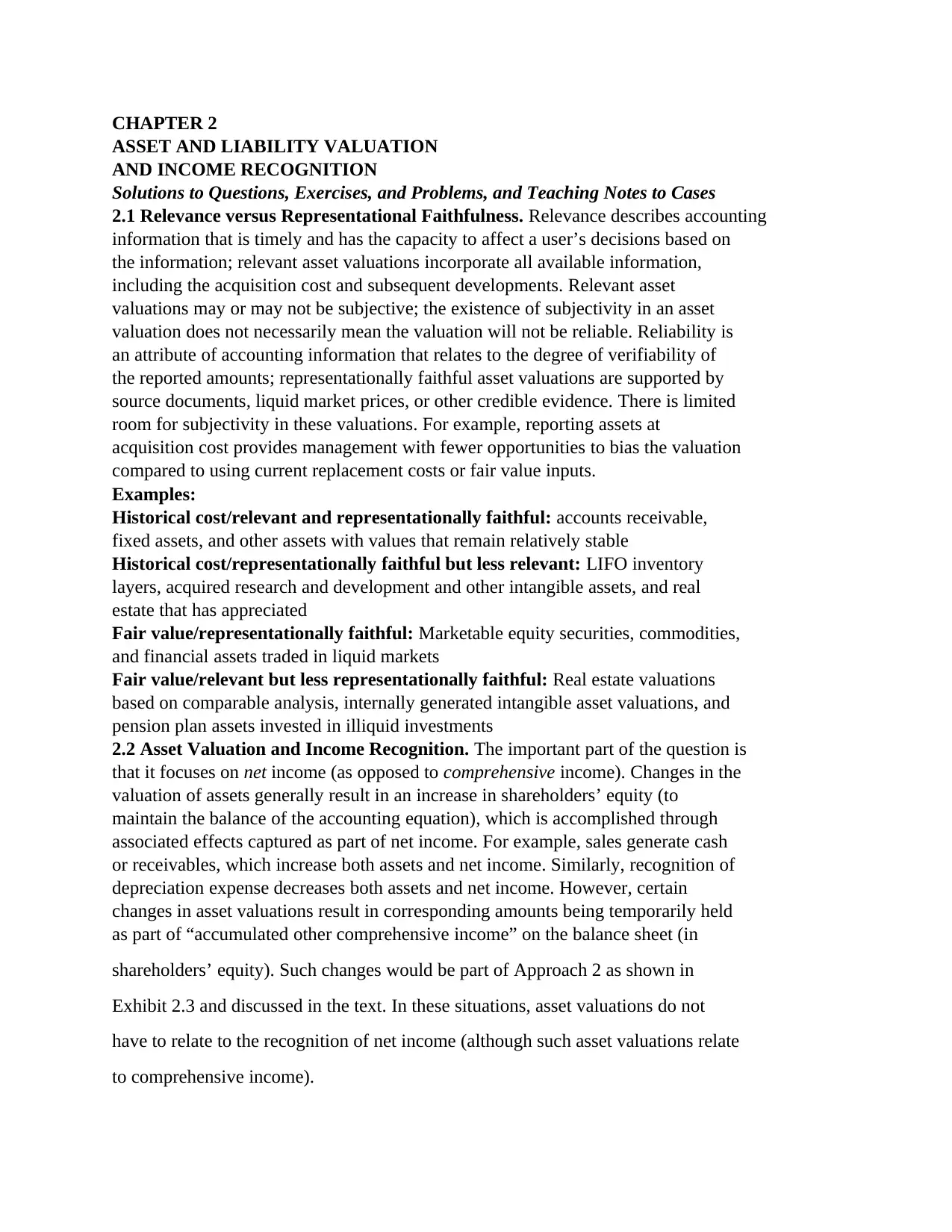Solutions for Asset and Liability Valuation and Income Recognition
VerifiedAdded on 2024/04/29
|2
|727
|376
Homework Assignment
AI Summary
This document provides detailed solutions to questions, exercises, and problems related to asset and liability valuation and income recognition, focusing on key concepts such as relevance versus representational faithfulness, the relationship between asset valuation and income recognition, trade-offs among acceptable accounting alternatives like FIFO and LIFO, and the distinction between income flows and cash flows. The solutions illustrate how changes in asset valuation impact shareholders' equity and net income, while also addressing the importance of matching costs with revenues. The analysis demonstrates the equivalence of cash flows and earnings over a period of time, highlighting the timing differences between cash outflows and depreciation recognition. Desklib offers a platform to access this and other solved assignments.
1 out of 2








![[object Object]](/_next/static/media/star-bottom.7253800d.svg)